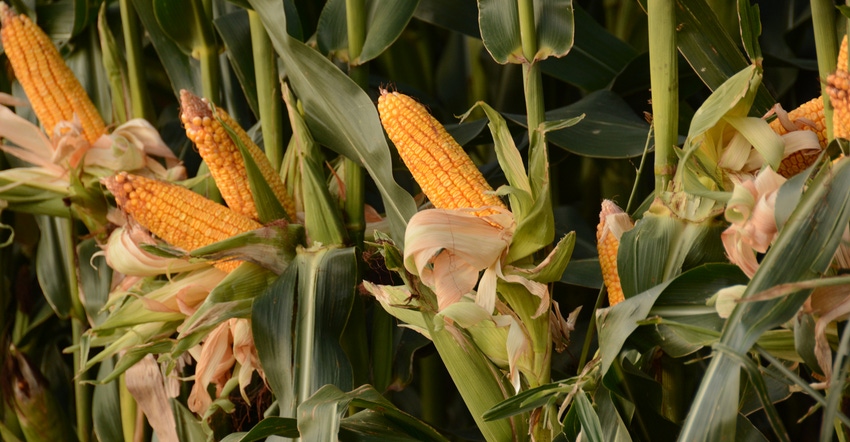
On its face, corn yield is pretty simple: the number of kernels you produce per acre, multiplied by the mass of the kernel’s weight.
“If your yield’s up or down, either way, one of those numbers changed,” says John McGillicuddy, agronomist and partner at McGillicuddy-Corrigan Agronomics. But dig a little deeper, and it’s a little more complex — especially in a late planting year where kernel weight can make all the difference.
Think of yield like a function: If you take a 260-bushel yield with 65,000 kernels per bushel and up that to 80,000 kernels, the same yield drops to 211. His team has weighed everything from 58,000 kernels to 120,000 kernels. In 2017, they saw an average of 62,000- to 72,000-kernel bushels. By 2018, kernels weren’t as heavy.
“Kernel weight can easily swing a corn yield in high-yield fields by 40 or 50 bushels,” he explains.
While farmers and their agronomists have tried to maximize yields in recent years by pushing populations, they did so with the assumption that they were stuck with 90,000 kernels per bushel. “The thing we’re noticing is the really high yields — the 250’s, 260’s and 270’s — have to have some help from kernel weight. You really can’t do that on numbers alone,” McGillicuddy says. “It’s really hard to hit 250 bushels on 90,000-kernel bushels.”
He attributes any fungicide gains almost exclusively to kernel weight, saying the fungicide keeps the plant alive longer, slows it down and allows it to generate kernel weight.
Tempering populations
What to do with all this information? McGillicuddy is using it to take a hard look at planting populations. His last three years of field data and test plots show that high populations don’t equal high yields. In fact, fields with 31,000 to 34,000 seeds per acre yielded higher and with less risk than fields planted with 35,000 to 37,000 seeds. McGillicuddy acknowledges that isn’t a popular view among seed companies but says his data shows the relationship between yield and population is “definitely not a really tight and linear relationship.”
The problem, of course, is that you don’t know whether high populations or low populations will pay off until the combine runs. McGillicuddy says they write planting prescriptions 3,000 higher and 3,000 lower than where they think it should be, as a test.
“What we’re trying to do is figure out whether we make more money 70% of the time by going to a moderate population, or do we make more money 70% of the time by going to a higher population?” he asks. Part of the key is knowing the hybrid well enough to plant it at an effective population, which, as McGillicuddy says, may or may not jive with company recommendations that are typically based on ideal soil and climate conditions.
“The problem is, you take that hybrid out into the real world where you don’t have control of all those other yield variables — and then you just have to play the odds,” he says.
The kicker is that up to 40% of kernel weight can happen in the last 20 days. For June-planted corn, that means 50 bushels are being decided right now, based on sunlight heat.
At the end of the day, the goal is the same: If you want to increase yields, either increase kernel numbers per acre or increase weight per kernel.
“But you probably should pick one, because it’s hard to do both in the same field. If you push populations for higher kernel number, you’re also going to increase the risk of disease, nutrient stress and premature death, which lightens up your kernel weight,” McGillicuddy explains.
About the Author(s)
You May Also Like






